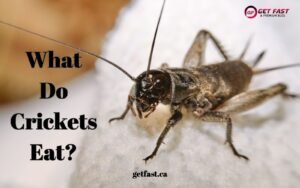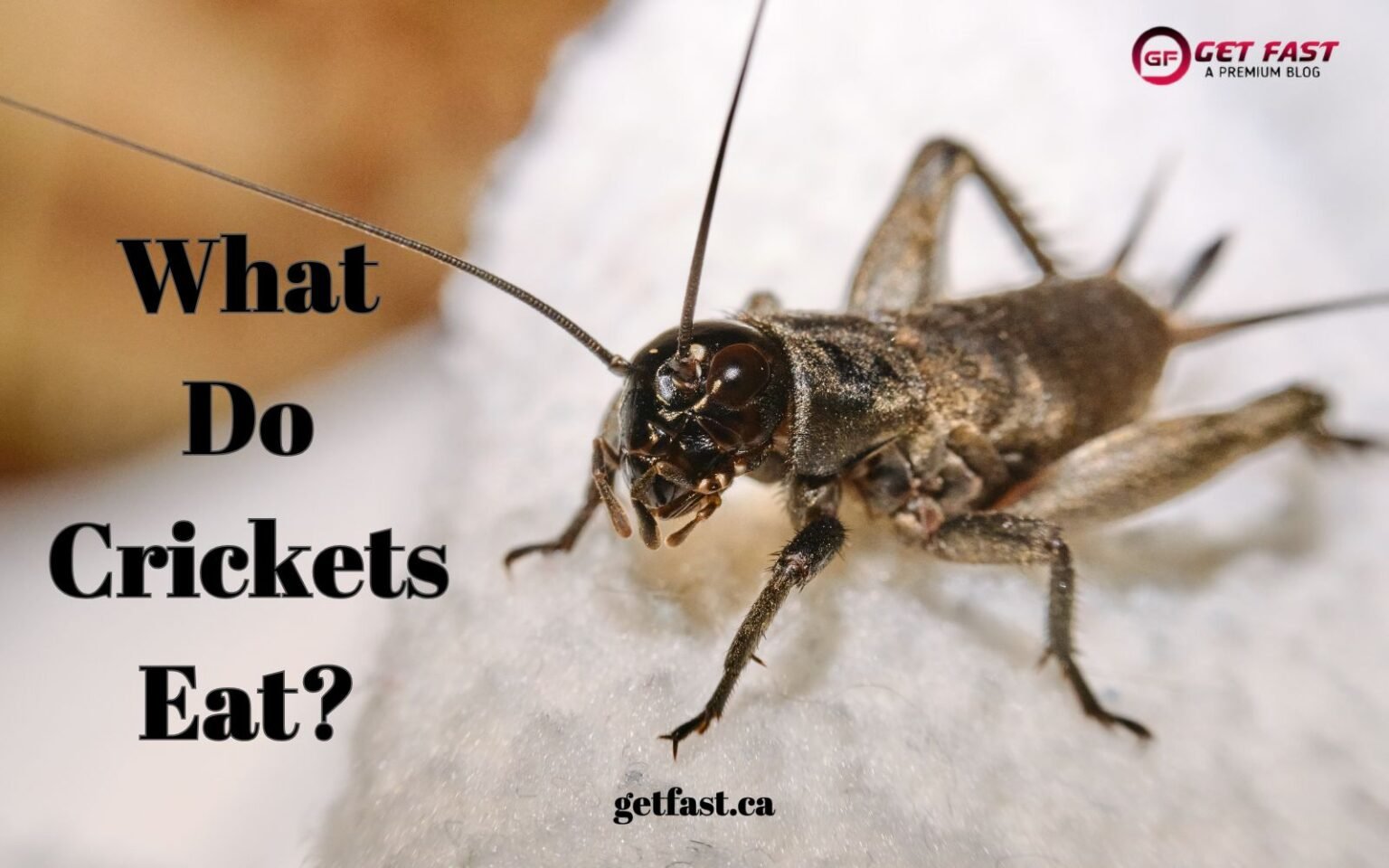Crickets, which are creepy-crawly invertebrate pests, are omnivores, so they munch on both plant-based and animal-based stuff. Knowing what crickets eat can help keep them in check, especially when they crash your home, garden, or pantry. Let’s dive into their eating habits and the foods that lure them in, along with some cool tips to stop your home from turning into their buffet.
What Do Crickets Eat?
Crickets are notorious pests, but knowing what do crickets eat can help manage their presence in your home. Let’s explore what do crickets eat to know what attracts them into your space:
1. Fruits
Crickets Attracted to fruits because they hydrate and nourish them. They can feed upon:
- Apple
- Bananas
- Orangest
- Berries
- Melon
2. Vegetables
You will probably find crickets around your vegetable storage areas. So there are a bunch of vegetables they prefer to eat:
- Leafy Vegetables
- Carrot
- Sweet Potatoes
- Squash
- Dandelion Leaves
3. Grains
Grains we think are the crickets personal favorites. Here’s a few grains that crickets consume:
- Oats
- Wheat Bran
- Rice
- Cornmeal
- Alfaalfa
4. Cereals
Even crickets enjoy the occasional cereal. Surprised? Well, you can find them feasting on your favorites:
- Cheerios: Plain Cheerios without sugar make a fun snack for crickets.
- Cornflakes: Cornflakes without sugar work well too.
- Oatmeal: Simple, cooked oatmeal gives crickets nutrition and moisture.
5. Protein
Yes, proteins are also important for crickets. So what can cricket’s eat for protein? Here’s what you can feed:
- Dog Food
- Cat Food
- Fish Food
- Chicken Feed
- Egg Yolks
- Soy Products
- Nuts and Seeds
6. Fabric & Paper
Yes, you read it right. Crickets can feast on your favorite piece of shirt or your important file. In fact, it might be the first sign you notice that your home has been infested by crickets. The foods that crickets can eat include:
- Wool
- Cotton
- Silk, and
- Synthetic fabrics
- Papers
7. Organic Debris
Along With your kitchen and room, another place you can spot crickets is your flower gardens. But why? Well, this is because crickets eat organic matter. Crickets frequently eat:
- Decaying leaves
- Wood
- Other organic debris
Are Crickets Dangerous?
Even though crickets won’t bite or sting us, and they’re not poisonous, they can still be a pain for us and our pets. That said, here’s the deal:
- Risk of Diseases: To begin with, crickets don’t pass on diseases directly, but their poop can mess up surfaces and food, which might spread germs.
- Property Damage: In addition, crickets munch on fabrics, paper, and other stuff in your home. They could ruin your clothes, furniture, and important documents.
- Annoying noise: Moreover, their chirping, especially when it’s dark, can interrupt your sleep and turn out to be a real headache.
- Garden trouble: Furthermore, they eat just about anything, and some types snack on plants, flowers, and veggies, which can damage your garden.
- Lawn wreckage: Moreover, mole crickets dig through lawns, creating squishy spots and killing off the grass.
So, if we figure out what crickets eat, we can totally manage them.
4 Ways To Prevent Cricket From Growing In Home
Now that we know what crickets chow down on, we can totally stop them from reproducing by keeping our food stored right. In addition to that, check out these steps to keep them from breeding:
1.Seal Those Entry Points
- Check for gaps: To start with, look for cracks or holes around windows, doors, and walls where crickets can sneak in.
- Put up weather stripping: Moreover, stick weather stripping around doors and windows to cover up small gaps.
- Use some caulk: Additionally, use caulk to seal up cracks in walls, around baseboards, and near plumbing or vents
- Fix your screens: Finally, repair or swap out damaged window and door screens to keep crickets out.
2. Ditch the Attractants
- Turn off bright lights: First of all, crickets love bright lights. Use yellow, sodium vapor, or motion-activated lights outside to make it less inviting for them.
- Keep your plants trimmed: Simultaneously, trim the bushes and chop down tall grass near your place to take away cricket hiding spots.
- Clear away debris: Also, get rid of wood piles, leaves, or stones that crickets might use for nesting.
3. Keep the Indoors Clean
- Vacuum often: To begin with, clean up carpets, corners, and crevices to get rid of cricket eggs or food crumbs.
- Store food the right way: Furthermore, keep your food in airtight containers to avoid bringing in crickets.
- Clear out the clutter: On top of that, cut down on storing boxes and piles of paper where crickets might chill.
4. Keep Moisture in Check
- Fix any leaks: To avoid moisture buildup, repair leaking pipes or faucets that create damp spots.
- Dehumidify those spaces: Additionally, use a dehumidifier in basements or other moist areas of your home.
- Make sure drains are clean: Lastly, ensure gutters and drains aren’t clogged to avoid moisture buildup.
How Can You Get Rid Of Crickets?
Since now, we know that every bit and corner of your home can be the feeding paradise for crickets. This is because they crickets can eat almost everything. Eventually, they become a nuisance. So, you can get rid of them in the following ways:
1. Indoor Treatments
Getting rid of crickets inside your house is straightforward. Just follow these simple steps:
- Create a homemade cricket trap: Combine a few tablespoons of molasses with water in a shallow dish to fill it halfway. Place this dish in areas where crickets appear. The sweet aroma attracts them, and they drown in the mixture.
- Apply diatomaceous earth (DE): Scatter DE along baseboards and in wall crevices where crickets hide. These microscopic particles damage the cricket’s outer shell leading to dehydration and death. DE has no toxicity making it safe for homes with children or animals.
- Use insecticides: Spray insecticide around window edges, door frames, and corners. Ensure the area dries before allowing pets or children to enter.
- Place glue traps: Position sticky traps in common areas such as basements, kitchens, or laundry rooms to capture the crickets.
2. Lawn Treatments
Crickets cause a lot of harm to your lawn by digging tunnels and killing grass. Here’s how you can deal with them effectively:
- Spread lawn granules: Follow the instructions on the package to apply insecticide granules. This will reduce cricket activity.
- Add nematodes: These tiny organisms eat young mole crickets, which helps control their population. Put them in your lawn during spring to disrupt their breeding cycle.
- Do regular treatments: When summer begins, use granular or liquid insecticides to eliminate any remaining crickets and limit damage to your lawn.
By paying attention to indoor, and lawn treatments, you can keep crickets away from your property while cutting down on damage and noise.
To wrap up
Crickets may look harmless, but they can turn into destructive pests if they end up in the wrong place. To keep these bugs away from your house or garden, it’s helpful to know what do crickets eat and what they don’t. Understanding this can keep these pesky insects under control and stop them from causing damage. By learning about their food preferences, you can take steps to make your space less appealing to them.
FAQ
Are there any natural predators of crickets?
Yes! Many animals naturally prey on crickets, including birds, frogs, lizards, and even certain insects like spiders. Encouraging these natural predators in your garden can help control cricket populations.
Can I repel crickets using essential oils?
Yes! Essential oils like peppermint and lemongrass can help repel crickets. Mixing a few drops with water in a spray bottle and applying it around entry points may deter them.


